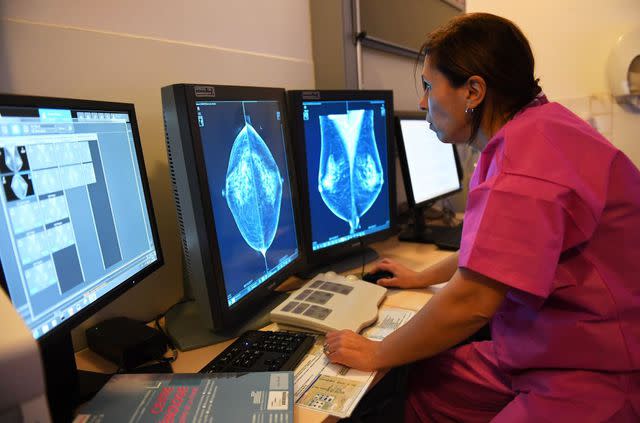Should You Pay Extra for AI to Read Your Mammogram? Breast Imaging Experts Weigh the Pros and Cons
Fact checked by Nick Blackmer
Some clinics now allow patients to pay up to $100 for artificial intelligence to analyze their mammograms in addition to a breast radiologist.
Doctors said the service has potential but question its current reliability and usefulness.
According to experts, patients don’t need an AI analysis to be confident in a mammography result.
Clinics nationwide are offering patients the option to have their mammograms analyzed by an artificial intelligence model in addition to a radiologist. Medical centers offering the paid service say it could provide more precise results and earlier detection.
Currently, mammograms identify around 87% of breast cancers. Screenings serve as the primary breast cancer detection method for most women and help reduce the risk of dying from the disease, Ilana Richman, MD, an assistant professor of medicine at Yale School of Medicine who focuses on evaluating new breast cancer screening technologies, told Health.
“However, mammography is not perfect—it can miss some breast cancers, and it can also result in false alarms, when the mammogram appears abnormal, but there is no breast cancer present,” Richman said. “One of the goals of AI is to improve the accuracy of mammography to address these issues.”
The Food and Drug Administration has approved roughly two dozen AI products for breast cancer imaging. Insurance doesn’t cover any of them, and out-of-pocket costs range from $40 to $100.
Before shelling out for an AI analysis, you might wonder how it works and whether it’s worth the cost. We’ve got you covered.

ANNE-CHRISTINE POUJOULAT / Contributor / Getty Images
How Does AI Read Mammographies?
Mammographic images provide a detailed look at breast tissue. The images have the potential to show nearly infinite shades of gray—any of which could signify something clinically relevant, Katerina Dodelzon MD, an associate professor of radiology specializing in breast imaging at Weill Cornell Medicine, told Health.
In most cases, a radiologist can detect a concerning pattern. But AI could pick up on something suspicious that a human might not, she said.
“An artificial intelligence algorithm can quickly detect and analyze these patterns for potential significance,” Dodelzon said. “In the case of AI used to detect breast cancer, it can highlight areas that may potentially contain breast cancer.”
If an AI model flags a concerning area, a breast radiologist will then examine the images.
Related: Women Should Begin Regular Mammograms at 40, U.S. Health Panel Recommends
Is AI Analysis Reliable and Useful?
Some recent studies suggest that the addition of AI tools could help boost the accuracy of mammography results.
One of the largest studies of AI in mammography showed that the technology improved breast cancer detection by 20%. Researchers examined data from 80,000 women, finding that AI detected six cancer cases per 1,000 women, while radiologists found five cases per 1,000 women.
Furthermore, a 2022 Danish study showed that an AI model reduced the number of false positives, which meant fewer women had to return to the doctor for follow-up testing.
But Richman said it’s still unknown how accurate AI tools might be in clinical environments, which are less controlled than the settings where AI products are developed and tested.
“This is certainly exciting. However, more research on its effectiveness and the development of these tools is needed,” Dodelzon said. “AI is just a tool that learns based on what it sees. If it never sees a certain presentation of breast cancer in a particular context, it may fail to recognize it in a future patient.”
Richman noted that AI, currently offered by a handful of clinics located primarily in large cities, may perform better for some populations than others, contributing to health disparities.
She also said that it’s unclear whether using AI in mammography screenings will translate to improving women’s health. “We are beginning to see studies of AI products in clinical practice that will help answer some of these questions,” she said, “but we are still in the early days of really understanding the potential risks and benefits of these technologies.”
The tools may be particularly useful in communities without expert breast radiologists, she added.
Is an AI Reading Worth the Money?
Ultimately, this depends on the cost and your specific concerns about breast cancer. It’s certainly possible that opting for the extra AI service could result in a more thorough analysis.
However, Dodelzon stressed that patients don’t need an AI reading to be confident in their mammography results.
“I think that right now, women should be assured that they are receiving the highest standard of care of having their mammogram interpreted by an expert physician—a breast radiologist,” she said. “Whether AI is playing a part in the background or not, they shouldn’t feel they are getting a suboptimal mammogram interpretation in its absence.”
For more Health.com news, make sure to sign up for our newsletter!
Read the original article on Health.com.

